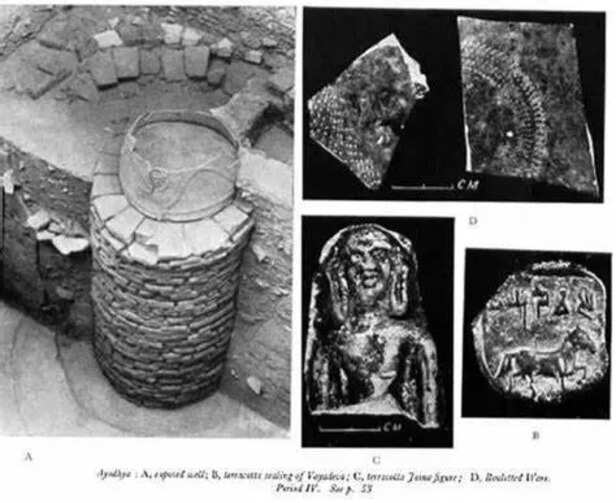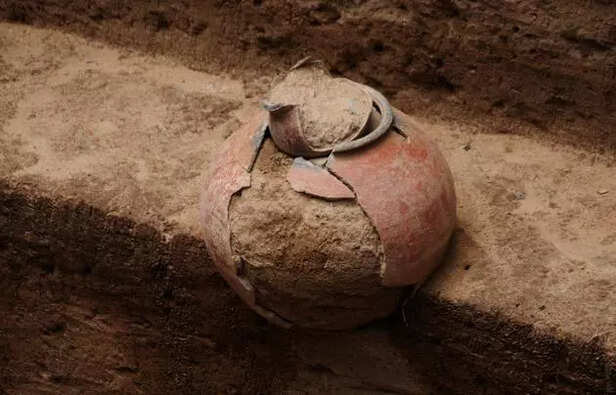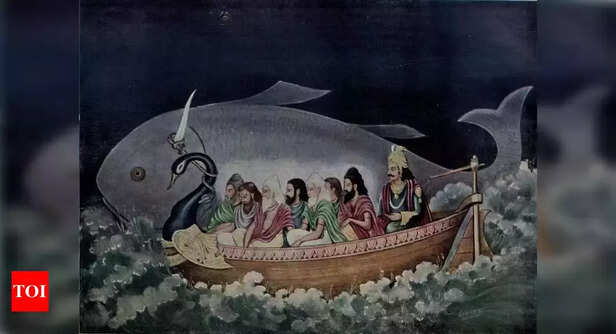Ramayana vs. Archaeology: Do Excavations Prove the Story of Ayodhya?
Nidhi | Mar 11, 2025, 16:20 IST
Ramayana
( Image credit : Times Life Bureau )
Explore how archaeological excavations in Ayodhya are uncovering evidence that supports the Ramayana’s historical roots. From ancient temple remains to the Vishnu-Hari inscription, key discoveries align with the epic's narrative. This article delves into expert findings and historical context. Uncover the bridge between faith and history.
The Ramayana — an epic deeply woven into India's spiritual and cultural fabric — tells the story of Lord Rama, the prince of Ayodhya, whose journey of righteousness and devotion has inspired millions for centuries. But is it just a sacred story passed down through generations, or does history back it up? Archaeological excavations in Ayodhya have uncovered clues that could finally connect the spiritual with the historical. Let’s explore the findings, the debates, and what they mean for the legacy of Lord Rama.
Serious archaeological exploration in Ayodhya began in the mid-1970s as part of the project "Archaeology of Ramayana Sites."

 One of the most significant pieces of evidence came in the form of the Vishnu-Hari inscription — a stone slab found near the Babri Masjid site.
One of the most significant pieces of evidence came in the form of the Vishnu-Hari inscription — a stone slab found near the Babri Masjid site.
In 2003, the Archaeological Survey of India (ASI) carried out another major excavation at the disputed site. The findings were remarkable.

While the excavations have uncovered significant evidence, the interpretation of these findings remains contentious.

For millions of Hindus, Ayodhya is not just a historical site — it’s a sacred ground where faith and devotion transcend material evidence.

 The archaeological evidence from Ayodhya — the Vishnu-Hari inscription, terracotta figurines, and architectural remains — suggests that a Hindu temple likely existed at the site centuries ago. While the direct connection to the Ramayana’s events remains open to interpretation, the findings lend credibility to the idea that Ayodhya was a significant Hindu religious center long before the construction of the Babri Masjid.
The archaeological evidence from Ayodhya — the Vishnu-Hari inscription, terracotta figurines, and architectural remains — suggests that a Hindu temple likely existed at the site centuries ago. While the direct connection to the Ramayana’s events remains open to interpretation, the findings lend credibility to the idea that Ayodhya was a significant Hindu religious center long before the construction of the Babri Masjid.
Yet, Ayodhya’s significance goes beyond historical proof. For millions, the story of Lord Rama is a moral and spiritual guide — a tale of dharma, sacrifice, and triumph. Whether or not history aligns perfectly with faith, the legacy of Lord Rama continues to shape India’s cultural and spiritual identity.
Digging into the Past: Early Excavations and Surprising Clues

KK Muhammed was with me during excavation at Ayodhya
- The project was led by Professor B. B. Lal, one of India’s most respected archaeologists. His goal was to determine whether Ayodhya held any material evidence to support the Ramayana’s narrative.
- In the 1975–76 excavations, Lal’s team discovered a series of pillar bases immediately south of the Babri Masjid. Initially, these findings didn’t attract much attention — they were seen as remnants of an older, possibly medieval structure.
- However, in the 1990s, Lal revisited these findings and proposed that the pillar bases indicated the existence of a large Hindu temple beneath the Babri Masjid. This was the first major suggestion that Ayodhya’s history could align with the Ramayana’s account.
The Vishnu-Hari Inscription: A Key Piece of the Puzzle

Lord Vishnu
( Image credit : Times Life Bureau )
- The inscription, written in Nagari script, mentions a temple dedicated to “Vishnu, the slayer of Bali and the ten-headed one.” This is widely interpreted as a reference to Lord Rama’s victory over Ravana.
- Historians M. G. S. Narayanan and Meenakshi Jain have supported the authenticity of this inscription, suggesting that it confirms the presence of a Vishnu temple before the Babri Masjid was built.
- However, not everyone agrees. Some historians, including Sita Ram Roy, have questioned the dating of the inscription, suggesting that it could have been placed at the site during a later period.
2003 Excavations: What Lies Beneath Ayodhya’s Soil?

In 2003, the Archaeological Survey of India (ASI) of Ayodhya
( Image credit : Times Life Bureau )
- Over 50 pillar bases were discovered, indicating the foundations of a large temple structure that dates back to the 12th century.
- The excavation also revealed 263 terracotta figurines depicting deities, human figures, and animals — consistent with the artistic style found in ancient Hindu temples.
- A Makara Pranali (a decorative drainage system with crocodile motifs) was discovered, which is a classic feature of Hindu temple architecture symbolizing the holy rivers Ganga, Yamuna, and Saraswati.
- Other architectural fragments, including parts of temple roofs and spires, reinforced the theory that a Hindu temple had once stood at the site.
Scholars Speak: Faith vs. History

BB Lal: Manu's flood a reality, says archaeologist B B Lal
( Image credit : Times Life Bureau )
- B. B. Lal has consistently maintained that the findings confirm the existence of a grand Ram temple at the site.
- Meenakshi Jain has argued that the alignment of the archaeological evidence with details from the Ramayana is too strong to dismiss as coincidence.
- Historian Romila Thapar, however, has urged caution, suggesting that evidence should not be interpreted through a religious lens and that the findings could represent a different temple structure, not necessarily linked to Lord Rama.
- Some scholars believe that the site’s religious and political significance has influenced how the findings have been presented and interpreted.
Faith or Fact: Does It Really Matter?

Ayodhaya
( Image credit : Times Life Bureau )
- The annual Ram Navami festival, which marks the birth of Lord Rama, draws millions of devotees to Ayodhya. The city comes alive with prayers, music, and religious processions.
- Temples, river ghats, and sacred sites dedicated to Lord Rama keep the spiritual energy of Ayodhya alive, regardless of what archaeological excavations uncover.
- For believers, Lord Rama’s legacy is rooted in the values of dharma (righteousness) and devotion — not just in historical proof.
Bridging Myth and History

Babri Masjid Demolition
( Image credit : Times Life Bureau )
Yet, Ayodhya’s significance goes beyond historical proof. For millions, the story of Lord Rama is a moral and spiritual guide — a tale of dharma, sacrifice, and triumph. Whether or not history aligns perfectly with faith, the legacy of Lord Rama continues to shape India’s cultural and spiritual identity.
